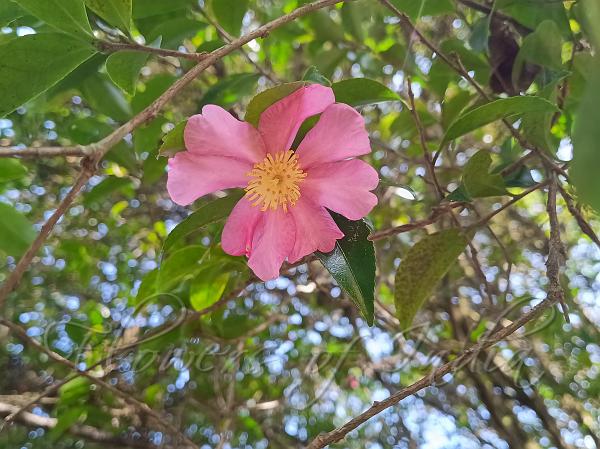|
| Sasankwa |
|

|

| File size | 717167 |
| Original date | 11/8/23 12:17 PM |
| Resolution | 4096 x 3072 |
| Flash | Flash did not fire |
| Focal length | 5.56mm |
| Exposure time | 1/50s |
| Aperture | 1.88 |
| Focus Distance | |
| Metering Mode | Center weighted average |
| Camera make | motorola |
| Camera model | moto g73 5G |
| Sensor type | MonochromeArea |
|
|
|
|
Photo: |
Botanical name: Camellia sasanqua Family: Theaceae (Tea family)
Synonyms: Thea sasanqua, Sasanqua vulgaris, Sasanqua odorata
Synonyms: Thea sasanqua, Sasanqua vulgaris, Sasanqua odorata
Sasankwa is a densely branched, pyramidal to
oval-rounded, tree-like, evergreen shrub that typically grows to 6-10
ft tall. Lustrous, narrow-oval to obovate, dark green leaves, up to 7
cm long, are wedge-shaped and hairy on the midrib with rounded marginal
teeth and velvet-hairy leaf-stalks. Stems are covered with significant
velvet-hairs. White to pale pink, 6-8 petaled, mildly fragrant flowers,
5-7 cm across, each having a central mass of bright yellow-anthered
stamens, bloom late summer to early winter depending on local climate.
Petals fall after several days but stamens remain, with additional
flowers continuing to open in succession over a period of 4-6 weeks.
Flowers are followed by small rounded fruits. Fruit is a smooth and
shiny capsule, up to 2 cm long. Sasankwa has a long history of
cultivation in Japan for practical rather than decorative reasons. The
leaves are used to make tea while the seeds or nuts are used to make
tea seed oil, which is used for lighting, lubrication, cooking and
cosmetic purposes. Tea oil has a higher calorific content than any
other edible oil available naturally in Japan. Sasankwa is native to
Japan, cultivated and naturalized in NE India, Korea, Laos, Vietnam.
| Identification credit: Abhijeet Das | Photographed in Darjeeling, West Bengal. |
• Is this flower misidentified? If yes,